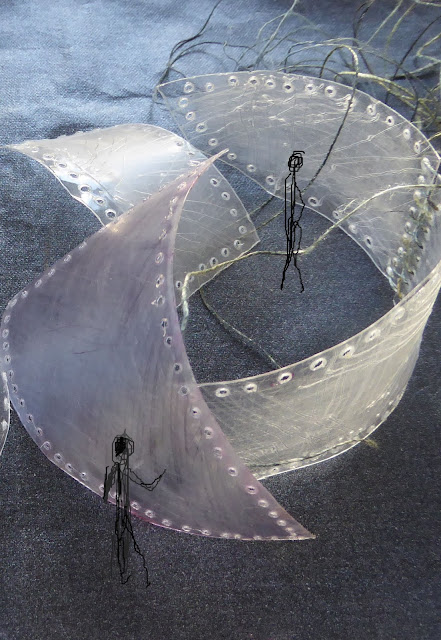I wonder how some of the shapes would look if they were enlarged enough to walk around and in and out of them. I've selected a few examples from my photo gallery and then tried to imagine how this would look, using pin figures to suggest scale.The shadows would become dramatic additions to the installation.
To give an idea of scale, this piece of work has been de-constructed from a small plastic drinks bottle.
Figures have been drawn into the enlarged image below to suggest the change of scale.
It's fascinating to view the small hand-sized shapes as if they were larger than a figure.A figure and lines to suggest the edges of a room have been drawn into the image below to suggest the impact of a change of scale.
To give an idea of scale, these forms have been cut from a small plastic drinks bottle.
Figures have been drawn into the enlarged image below to suggest the impact of a change of scale.
'Tidal Pool 1', a wall-hung piece, could be installed as a wall-leaning piece, taking up a whole room space in a gallery if constructed on a much larger scale.
A figure and lines to suggest the edge of a room has been drawn into the two images below to suggest the impact of a change of scale.



























































